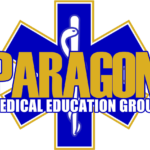Disaster Medicine and Training Discussion at EMS Today 2014
Podcast: Play in new window | Download
Subscribe: Apple Podcasts | RSS | More
 Last week the Disaster Podcast host Jamie Davis, the Podmedic along with co-host Sam Bradley sat down with Dr. Holley and Jim Logan from Paragon Medical Education Group to talk about their educational experience program at EMS Today. The focus is on the importance of training.
Last week the Disaster Podcast host Jamie Davis, the Podmedic along with co-host Sam Bradley sat down with Dr. Holley and Jim Logan from Paragon Medical Education Group to talk about their educational experience program at EMS Today. The focus is on the importance of training.
Stress Immersion Training Explained
Disaster responders like all responders, need training specific to what they are expected to do and experience in a deployment. The need to be able to not only take care of the communities to which they respond, they also need to be able to care for themselves and their team mates at the same time. Jim Logan says the best training is something he calls “Stress Immersion” which most closely resembles the things they’ll actually encounter in the field.
The Cadaver Lab conducted by Paragon Education Group at EMS Today is a great example of the type of class in which you get this “stress immersion” training. Those basic skills that are often relegated to the low-man on the team are still essential skills to be mastered and practiced. Joe Holley also points out that a disaster responder needs to not only know how to do something but also why they do a particular intervention.
In disaster response situations, the USAR (Urban Search and Rescue) teams and the DMAT (Disaster Medical Aid Team) members all need to be self-reliant and learn to manage and treat patients without the common supplies or resources commonly available in the hospital. You don’t have expensive imaging tools, diagnostic machines, or even lab work in some situations. The disaster responder is forced to fall back on basic skills and history taking to make diagnostic, treatment, and transport decisions.
Subscribe to the Disaster Podcast –
—–
—-


Recent Comments